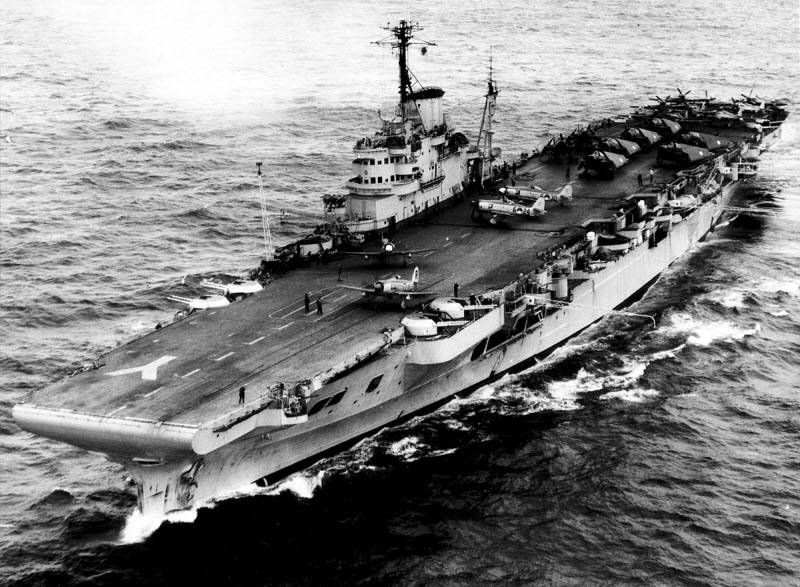
Stanley McGivern was born in late 1925 in the Dewsbury area, the younger son of three children, born to Herbert McGivern and Emmeline Stables who married in the Dewsbury area in spring 1921. Emmeline was born on the 30th March 1896, the daughter of willyer William Stables and his wife Mary Ann. In 1911 she was living her parents at Cross Ryecroft Street, Ossett In 1939 Emmeline McGivern was living on Westwood Road Ossett with two of her children, Hebert and Hilda and a third name, redacted, which was probably Stanley.
At some time during WW2, Stanley McGivern joined the Royal Navy and was posted aboard the aircraft carrier HMS Illustrious, which took part in the Battle of Taranto in 1941.
In January 1945, the British Pacific Fleet (in Ceylon) under the command of Admiral Fraser was ordered to Sydney for final preparations to fight alongside the Americans in the Pacific. Admiral Nimitz then asked Fraser to divert the British Pacific Fleet while en route to Sydney to launch a major attack on the oil refineries of southern Sumatra on their journey to Australia. What resulted was the largest operation conducted by the Fleet Air Arm during World War II – a two-pronged attack to put the facilities south of Palembang out of action.
The city of Palembang sits in south-eastern Sumatra, about 270 miles south of Japanese occupied Singapore. It was a major road, rail and river transport hub. It was also the headquarters for the Japanese occupation of Sumatra. The reason for this was simple. Two large and strategically vital oil refineries were situated close by.
On the 29th January 1945 aircraft of the Fleet Air Arm launched raids on Soengi Gerong oil refineries near Palembang in the Netherlands East Indies. During retaliatory Japanese Kamikaze attacks on the Fleet whilst aircraft were landing, HMS Illustrious was hit by two shells from HMS Euryalus anti-aircraft fire and 11 men were killed, including Stanley McGivern with 22 other casualties.

Above: Aircraft carrier HMS Illustrious was 224m long with a ships complement of 1,299 sailors. Ordered on 12th January 1937 from Vickers Armstrong at Barrow under the 1936 Programme, and launched on the 5th April 1939, HMS Illustrious carried 36 aircraft and was finally taken out of service in February 1955.
Stanley McGivern died on the 29th January 1945, aged 19 years, the son of Herbert and Emmeline McGivern, of Chesterfield, Derbyshire. He is commemorated on the Portsmouth Naval Memorial on Panel 89, Column 1.
More than 45,000 men and women lost their lives while serving with the Royal Navy during the First World War. After the Armistice, the naval authorities and the Commonwealth War Graves Commission were determined to find an appropriate way to commemorate naval personnel who had no grave. Standing on Southsea Common overlooking the promenade in Portsmouth, Hampshire, is the Portsmouth Naval Memorial. It commemorates nearly 10,000 naval personnel of the First World War and almost 15,000 of the Second World War who were lost or buried at sea.1
References: